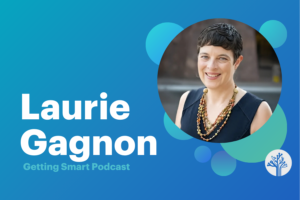The Business Role in Education: Examples, Expectations & Support

Last month, I talked to three extraordinary corporate CEOs about talent development and the role of business in education. All three were trained as engineers and support the Common Core State Standards and expanded STEM education.
Rex Tillerson is CEO of ExxonMobile, the world’s most valuable company (besting Apple as of last week). You’ve probably seen their ubiquitous TV commercials in support of the National Math and Science Initiative (NMSI) and the Mickelson ExxonMobil Teachers Academy.
Ursula Burns is CEO of Xerox, the document processing company. A mechanical engineer, Burns joined Xerox in 1981. She serves as Vice Chairman of The Business Council, a learning network of chief executive officers. Ursula is founding member of the National Academy Foundation and Change the Equation. Two organizations dedicated to raising student achievement in STEM, and especially among women and minorities.
Paul Jacobs is CEO of chip giant Qualcomm. He joined the company that his father co-founded as an engineer in 1990. With a Qualcomm grant, North Carolina schools demonstrated big gains with the use of mobile phones.
Talent Development. All three companies are demanding workplaces. They all use a comprehensive performance review system that combines data and judgement to make decisions about compensation and advancement.
Training and development has changed dramatically in all three environments over the last decade. There is less travel for training and more online and just-in-time learning. All three companies use a human resource information system to track individual learning records.
Xerox observed how younger workers interacted with mobile technology and social apps. About bring-your-own-device strategies, Burns said, “It was challenging for our IT systems.” They modified policies to promote flexibility, communication, and collaboration.
ExxonMobile learned from its younger workers about collaborative environments. “Our new office campus is designed to promote greater collaboration and includes extensive open concept spaces,” Tillerson said. The shift away from traditional offices was initially challenging for some veterans but “now most wouldn’t go back to the old way of working.”
Given energy employment cycles, ExxonMobil has a bifurcated workforce of younger and experienced employees. One particular challenge of the missing middle is the experience required to be an effective geoscientist. Tillerson said, “we’ve built knowledge maps for these key positions.”
I mentioned Khan Academy as a good K-12 example of a knowledge maps and Burns said that Xerox employees frequently use Khan Academy resources.
School districts could learn a lot about talent development from these companies. If your district has a Fortune 500 company in town, make sure the school district HR team spends a day on site to experience productive workplaces.
STEM. All three CEOs are big advocates of improved access to quality STEM education. They all engage in higher education science and engineering education partnerships.
Tillerson recommended the spring edition of The Bridge from the National Academy of Engineering–it is devoted to precollegiate STEM preparation and implementation of the new science standards.
The National Math and Science Initiative (NMSI), supported by a $125 million ExxonMobile investment, includes a comprehensive effort to boost Advanced Placement enrollment and success and UTeach, an accelerated math and science teacher preparation program. Sara Martinez Tucker, former Hispanic Scholarship Fund director (and AT&T exec) recently took over NMSI from founder Tom Luce.
Core is Key. The three chief executives appreciate the value of the Common Core’s college- and career-ready expectations. All three CEOs are members of The Business Council which does an annual survey of chief executives. The recently released survey indicated that CEOs Want Hard-Working Decision-Making Team-Players.
Ursula urges business leaders to “include an education component into every meeting, let folks know you’re paying attention, know your numbers, and use your power of convening with other companies and officials.”
This blog first appeared on Huffington Post







0 Comments
Leave a Comment
Your email address will not be published. All fields are required.